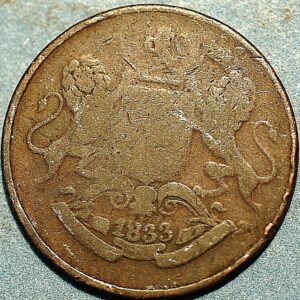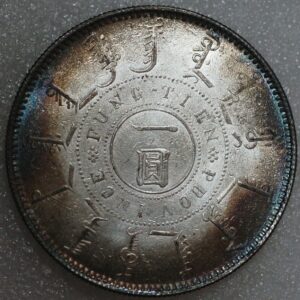Description
India British 1/4 Anna 1862 Victoria VICTORIA QUEEN KM# 467
(P35)
India – British
Years 1862-1876
Value 1/4 Anna (1/64)
Metal Copper
Weight 6.44 g
Diameter 25.18 mm
Thickness 1.84 mm.
Coins of British India
British trading posts in India were first established by the East India Company (EIC) early in the seventeenth century, which quickly evolved into larger colonies covering a significant part of the subcontinent. Early settlements or factories included Masulipatnam (1611) and Madras (1640) in the south, Surat (1612) in the west, and modern-day Kolkata (1698–99) in the east. These colonies gave rise to Madras Presidency, Bombay Presidency, and Bengal Presidency, and each Presidency had a separate coinage and monetary system. In 1835, the EIC adopted a unified system of coinage throughout all British possessions in India and the older Presidency system was discontinued. After the Indian Rebellion of 1857, control of EIC territories passed to the British Crown. Coinage issued after 1857 were under the authority of monarch as India became part of the British Empire. There was a transition period after India gained independence on 15 August 1947, and the first set of republic India coins were issued in 1950.
Indian silver rupee of 1918, obverse
Coinage under the British can be divided into two periods: East India Company (EIC) issues, pre-1858; and Imperial issues struck under direct authority of the crown. The EIC issues can be further subdivided into two subcategories: the Presidency issues, which comprise separate Madras Presidency, Bombay Presidency, and Bengal Presidency issues; and uniform coinage for all British territories from 1835 to 1858. Imperial issues bear obverse portraits of Queen Victoria (dated 1862–1901), Edward VII (dated 1903–1910), George V (dated 1911–1936), and George VI (dated 1938–1947). No British India coins were issued during the brief reign of Edward VIII.












